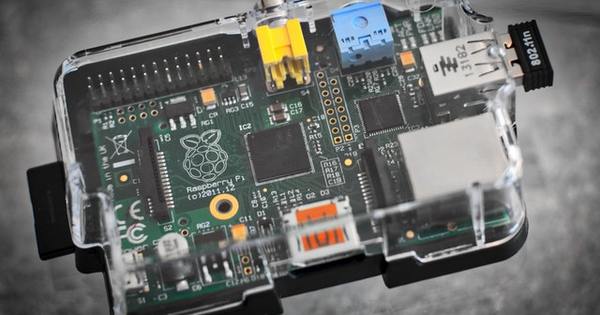Many antivirus manufacturers see your router as a central point for the security of your home network. Many security guards work with other router manufacturers, but the F-Secure Sense from the Finnish security company F-Secure provides its own router, which ensures that all network traffic from your connected home network equipment is monitored for wrong or suspicious behavior. Is it an addition to your home network, or a money grab?
F-Secure Sense
Price € 199 (plus € 9.90 per month after one year)Processor 1GHz dual core
Memory 512MB DDR3
Ports 4x Ethernet (1000Mbps), 1x USB 3.0
wireless 802.11a/b/g/n/ac (ac1750, 2.4 and 5 GHz), bluetooth 4.0
OS Android, iOS
Website www.f-secure.com 6 Score 60
- Pros
- Extra layer of security
- Can be used wired or wirelessly
- Includes Internet Security software
- Easy installation and configuration
- Negatives
- No VPN
- Speed loss
- Unable to remove malware
- Cost
The idea of the F-Secure Sense is that all connected devices are monitored for suspicious behavior and blocked where necessary. In this way, home automation and iOT (Internet of Things) equipment, such as smart thermostats, lighting, smart TVs and more, can be influenced, much more in the near future. The disadvantage of this equipment is that you cannot influence it yourself. This also applies to security guards. While they are an interesting and prone target for cyber criminals. This equipment is often easy to penetrate – and always accessible via the internet. For example, last year many iOT devices were part of Mirai, the largest botnet ever. It is also theoretically possible to infect this equipment with ransomware. The only way left to protect yourself is to influence the network and internet traffic that this equipment generates.
Of course, such a router also offers an extra layer of security for your devices where you do have control over the security, such as smartphones, tablets and PCs. Not just to block harmful network traffic that goes behind your back. But also blocking malicious sites, such as phishing sites or malware providers. However, it is not a replacement for antivirus on your PC. You will continue to need this to prevent actual infection, for example against malware infection via a USB stick. Fortunately, F-Secure ships antivirus for the PC along with the Sense router, but I'll get to that in a moment.
The F-Secure Sense does not replace the router in your meter box, but is connected to the router you already haveCentral connection point
The F-Secure Sense does not replace the router in your meter cupboard, but is connected to the router you already have. This makes the device more of an access point than a router. You then connect all your equipment in the house to the Sense router, to the WiFi network that is broadcast or via one of the three Ethernet ports on the back of the Sense.
The connection you make between your router and the F-Secure Sense can be wired or wireless. Wired is of course preferable, because that way you have as little speed loss as possible. If you do this wirelessly, you are of course a lot more flexible for the positioning for the Sense. The F-Secure device is therefore designed in such a way that it fits perfectly in (many) living rooms. In addition, there is a digital clock in it, which is very practical. However, a wireless link between Sense and the router does cause a bottleneck. The wireless transfer speed is of course a lot lower and you will notice that when you have connected multiple devices.
Fortunately, the router does use a dual band (2.4 GHz and 5 GHz). The F-Secure Sense uses AC1750, which is not exactly the latest technology and does not achieve the highest internet speeds over both bandwidths.

Installation
The installation of the F-Secure Sense is not done as you are used to via a web interface, but via an Android or iOS application. So you cannot use your PC or laptop for both the installation and monitoring of the Sense.
You can easily and safely set up the Sense router via the (English) app. Optionally, you also change the network name (SSID) and password, which by default is safely and randomly generated. But not really easy to remember. You can then connect to the new wireless network or connect the cables from other equipment for a more stable connection. It is therefore the intention that you have all equipment in the house connected to Sense in order to have them secured by F-Secure. Your old wireless network is therefore only used for the wireless connection between your router and the F-Secure Sense - if you have not connected them wired, of course.

In practice
When you choose to wirelessly connect the Sense to your network, this has serious consequences for the speed. In my network I get almost 50 Mbps download speed and 10 Mbps upload on my AVM router with VDSL connection. As soon as I connected to the Sense router it was only 20 to 10. So you are seriously giving up. But that's not very strange. Stranger, however, was that I achieved the same low speeds when I wired the Sense router to the router in the meter box. So the bottleneck is in the wireless network that the Sense transmits, because when I connected my laptop via ethernet to the F-Secure Sense, which in turn was connected to the router by wire, I did get the maximum download speed of 50Mbps again.
This also means that if you do not use the ethernet ports on the Sense, it is also pointless to connect the router with the F-Secure router via a cable.
The slower speeds will also only be negatively affected by the number of wireless devices nearby, your home and the radiation from wireless devices nearby. For example, consider the routers of the neighbors if you live in an apartment. In terms of range, I noticed no difference between my own AC router and the Sense.


Safety
Of course, it is not the network speed that you buy the Sense primarily for, but the security. The concept is not entirely new. A few years ago, Sitecom built 'Cloud Security' in its router, which checks whether connected equipment does not cause suspicious network traffic. Sitecom has not had any success with it, by the way. For example, in addition to F-Secure, Bitdefender, McAfee and Norton are also working on network-level security. With your own routers or routers of others.
The F-Secure Sense basically does the same thing. The network traffic is monitored, so that you are kept informed if, for example, your smart thermostat generates a lot of traffic to strange end destinations, or if contacted by untrustworthy senders. The router naturally blocks these connections. But infected files and unreliable sites (such as phishing sites) are also blocked on, for example, your connected PCs, laptops and other mobile devices.
In the app you can clearly see which devices are connected and which are causing problems. If something is not right, you can also see that by a light on the router. You can also choose whether to block ad trackers, hide the network and configure port forwarding. However, I did miss the option to set up a guest network, so that others can't just access everything when they are connected to your network.
Of course, this extra layer of security in your network never hurts. Yet it gives me a mixed feeling, a kind of symptom relief.Symptom control
Of course, this extra layer of security in your network never hurts. Yet it gives me a mixed feeling, a sort of symptomatic relief. Because if other manufacturers took the security of their home automation and iOT equipment seriously, such a Sense would not be necessary at all. Not only is this security not taken seriously, but neither consumer nor security company have any means of grabbing the device itself. For example, could your smart TV be infected with malware or included in a botnet? Then you are dependent on the TV manufacturer to get everything clean again. You or the security company can only block the network traffic it generates to neutralize the malware somewhat.

Price tag
However, this security must be paid for. The F-Secure Sense costs about 200 euros in the store. Included is one year of security from the Finnish security company, for both the router and a license for the Internet Security software, where you protect three devices for 60 euros per year.
This Internet Security software is still necessary for Windows. You would rather not burden your smartphone and tablet with unnecessary antivirus apps, such as those from F-Secure, which can also be used thanks to the supplied Internet Security. However, a VPN is essential for these devices. The point is that F-Secure's Freedome is an excellent VPN solution for iOS, Android and Windows. But Freedome is not included, so with F-Secure Sense you are not ready for optimal security in one fell swoop. Inquiries did tell me that F-Secure is considering adding Freedome, but unfortunately I was not confirmed.
When your security expires, you can extend it for 10 euros per month. Still including the Internet Security. That's not cheap. If you do not renew, you only have an access point left with the Sense, which you can use to, for example, still have a WiFi connection in hard-to-reach places in the house. But at the expense of the speed I described earlier. That is something to take into account, just like the fact that you can of course not switch to another antivirus provider, as you can on the PC of course.
Conclusion
As long as security of connected equipment such as home automation and iOT devices is not taken seriously, we will be on a path where network security such as with F-Secure Sense will soon be indispensable. Today it already offers a little extra security that can't hurt at all. But it still feels like symptom relief to me because other manufacturers are too lax with the security of their gadgets. In the context of 'if it does not bathe, then it does not harm' I would have placed the Sense in my living room. But because there is such a terrible loss of network speed, it is not worth it to me personally. It's also for you to consider whether this speed price is worth the extra security.

